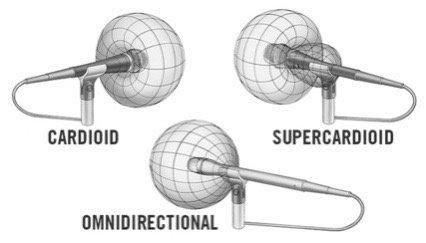Cardioid – What is Cardioid Microphone?
cardioid microphone It is a type of microphone that works by picking up sounds coming from a heart-shaped area in front of the diaphragm. Cardioid microphones, known for receiving sound from all sides with equal sensitivity, are also referred to as cardioid. Cardioid microphone, which is among the general-purpose microphone types, has ideal features for capturing room reverberation. So what is a cardioid microphone and how does it work? In this article, we will talk about the working principle of the cardioid microphone.
What is a Cardioid Microphone?
Cardioid microphone is a type of microphone that has a Polar Pattern and does not transmit the sound coming from the sides and back, thus hearing the sound in front of it best. Polar Pattern, which resembles a heart shape in structure, is why it is called Cardioid. The ability of cardioid microphones to not capture the sound coming from the background offers an advantageous use in certain areas. Particularly in cases where multiple miking is needed and where it is not desired to capture a large amount of room ambiance, support can be obtained from cardioid microphones.
Offering a wide range of usage areas and advantages, cardioid microphones generally reduce ambient noise in studio recordings and live performances and ensure the best transmission of sound. Cardioid microphones, which reject all sounds coming from the background, are one of the most preferred options in microphone applications. Cardioid microphones, which have a wide usage area, have a lapel version as well as the known structure. Thanks to the cardioid lapel microphone, you can experience the same efficiency by combining it with a portable structure.

What is a Super Cardioid Microphone?
Cardioid microphone, known as unidirectional microphone and used in many areas One above the option is super cardioid. Super cardioid microphone is a product model that detects the sound of a narrower area compared to a standard cardioid product design. Unlike the Cadriod design, super cardioid focuses on sounds directly in front of the microphone. Super cardioid microphones have the advantage of more sound softening than cardioid microphones in terms of structure and features. Super cardioid microphones, known for their resistance, also offer advanced features in sound capture.
The position factor can have a limiting effect when using a super cardioid microphone. It is very important for the quality of the sound that the person speaking into this microphone remains steady in front of the microphone. Super cardioid microphones, which offer an excellent structure for capturing sound from certain sources, are among the boom microphones frequently used especially on film sets. The supercardioid microphone model is known for providing better audio performance than smartphones, tablets, cameras and video cameras built into the microphone. Since this microphone model focuses on the front of the microphone as the sound detection area, it ensures that background sounds are isolated.
How Does a Cardioid Microphone Work?
Cardioid microphones, which are popular for reducing ambient noise, work perfectly when capturing a large amount of room ambience is not desired. Those who will use this type of microphone for the first time may be looking for the answer to the question of how cardioid microphones work. In general, cardioid microphones work to detect sounds coming from the front only.r. Collar-shaped models of cardioid microphones are preferred in studio and live performance areas. In both options, cardioid microphones focus on hearing the sound in front with the same working principle.
Cardioid microphones are types of microphones typically used in closed environments such as studio recordings and podcasts. These microphones better capture sounds close to the recorded sound source, minimizing background noise. In this way, it becomes easier to obtain a high-quality and clear sound recording. Therefore, cardioid microphones are important for those working in the voice-over field because a quality sound recording helps them get professional recordings in their work.
Both Cardioid and Super Cardioid microphones are commonly used for voice-over and dubbing. However, in general, Super Cardioid microphones provide better directivity and focus in a narrower area and therefore can suppress ambient noise better. Thanks to these features, Super Cardioid microphones are preferred for recording in a noisier environment or reducing other sources by using multiple microphones. However, Cardioid microphones also provide quality recording and can generally be used over a wider area. Ultimately, which microphone will be useful depends on the recording environment, the type of sound to be recorded, and personal preferences.
If you are wondering about more terms in the field of voice-over and dubbing Vocabulary Glossary You can take a look at our page. Also if you are interested in voiceover Audio Analysis You can get a professional sound analysis report by having it done.



















